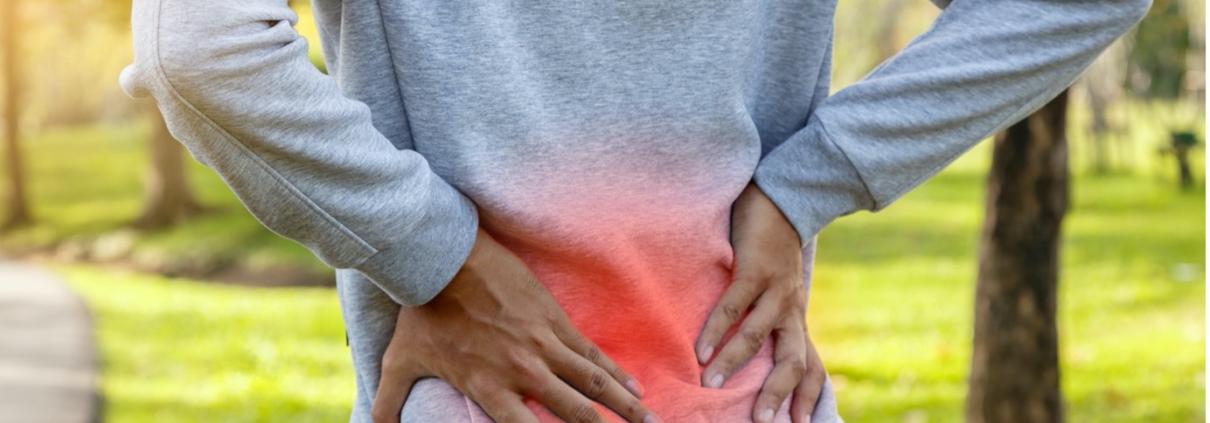When should I be worried about lower back pain?
Lower back pain really is exactly that – a massive pain in the back. Worldwide, the condition is believed to affect 540 million people. While in the UK, the debilitating problem affects around one-third of the adult population each year.
It can be caused by a range of wide and varied reasons. The pain might come on because you have suffered a strain or sprain. It could also be caused by bad posture or a sedentary lifestyle. But even stress can be another factor adding to the pain in your lower back as it can manifest physically as tightened muscles and thus add to the ache you are suffering.
So, when should you be worried about lower back pain?
Your spine is made of solid bony blocks reinforced by strong ligaments. It has a total of 40 muscles, with 20 muscle pairs on each side of your body. It is surprisingly difficult to damage. However, if lower back pain does occur, and it is accompanied by other symptoms, it’s worth a prompt trip to your GP.
The secondary symptoms to watch out for include:
- A high temperature
- Bladder problems
- Weight loss
Keep calm and get it checked
If you are suffering with these added symptoms, it’s never too soon to get your back checked. However, it’s important that you try not to worry.
Lower back pain is rarely caused by anything serious. And as the NHS confirms, worrying will do you no good, as people who manage to stay positive despite their pain tend to recover quicker.
How osteopathy can help lower back pain
If you are suffering from back problems, osteopathic treatment can help with the improvement of physiological function. It can do this through the use of soft tissue stretching, joint manipulation and the likes of resisted isometric ‘muscle energy’ stretching. And there’s research to prove it.
A recent 2021 meta-analysis, which was published in the Complementary Therapies in Medicine, saw researchers look into the effectiveness of osteopathic interventions in chronic non-specific low back pain. In the analysis, researchers conclude that: “Osteopathy is effective in pain levels and functional status improvements in non-specific chronic low back pain patients.”
Let’s get you back on the road to recovery
Robin Kiashek has been practicing Osteopathy for more than 25 years. In that time, he has trained in various additional complementary disciplines to extend the options he can offer his patients – including those suffering with lower back pain. These include:
- Western Medical Acupuncture – this is an effective form of pain relief because as confirmed by this study*, acupuncture can enhance peripheral blood flow which helps to heal wounds faster.
- Low Level Laser Therapy (LLLT) – this has long been used in the field of osteopathy and is widely available for the treatment of pain, the healing of wounds and musculoskeletal conditions – like low back pain. It provides a highly effective needle-free acupuncture medium as it uses low power laser light to alter cellular function, improve outcomes and speed up your body’s natural healing process.
The moral of the (lower back pain) story
If in doubt, check it out. Get in touch with your GP or speak to Robin who could help you get to the root cause of the issue.
Robin works in a holistic manner so will take a full medical and lifestyle history to get a proper understanding of the issue that brought you to his clinic.
This, combined with a physical examination enables him to devise a treatment plan tailored to you.
*Reference:
Yang, Cheng-Chan, Wei-You Zhuang, and Hsien-Tsai Wu. “Assessment of the impact of acupuncture on peripheral blood flow with multi-channel photoplethysmography.” In Electron Devices and Solid-State Circuits (EDSSC), 2014 IEEE International Conference on, pp. 1-2. IEEE, 2014.





Leave a Reply
Want to join the discussion?Feel free to contribute!